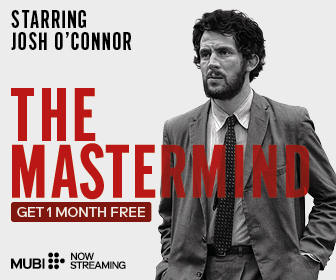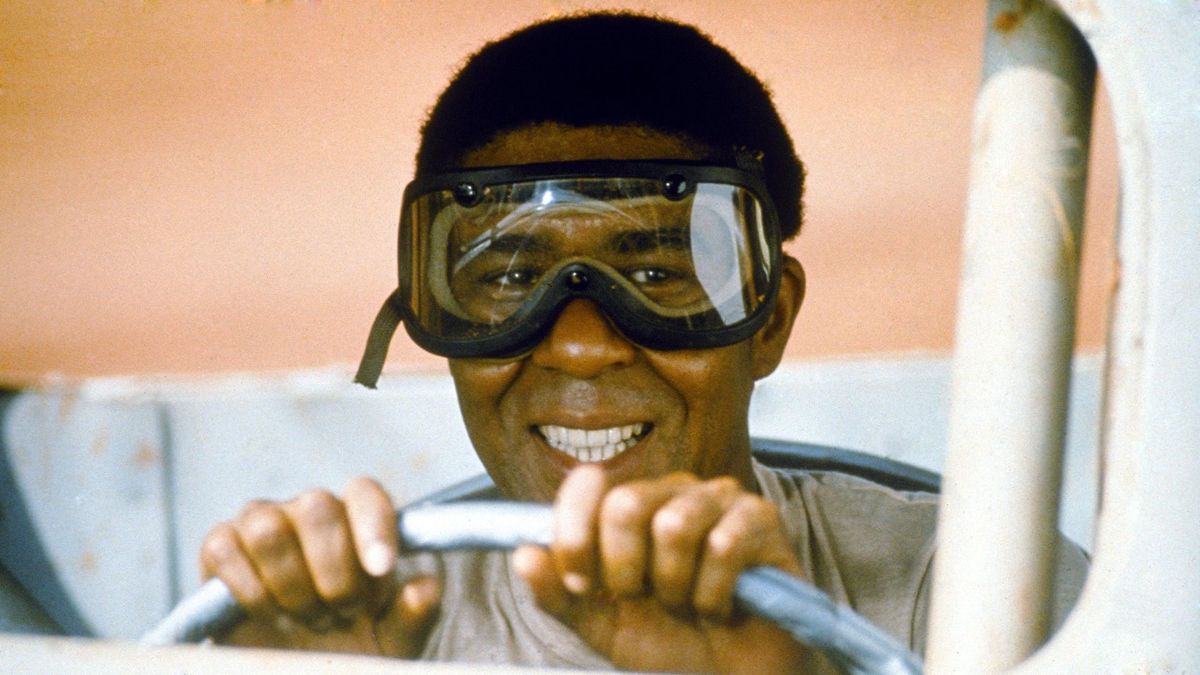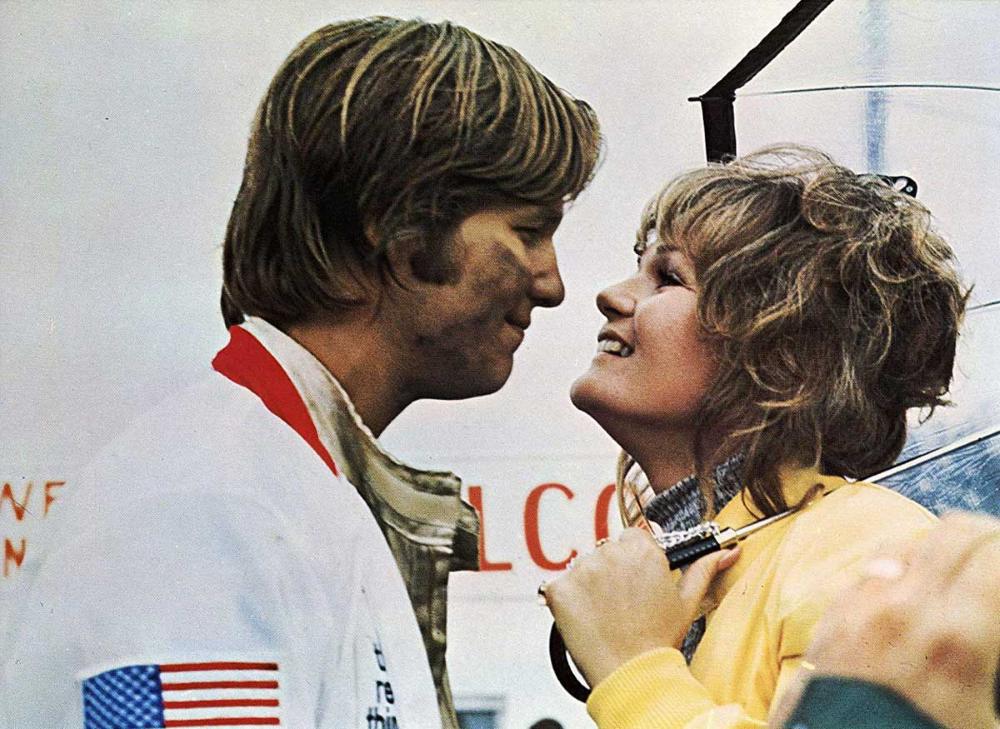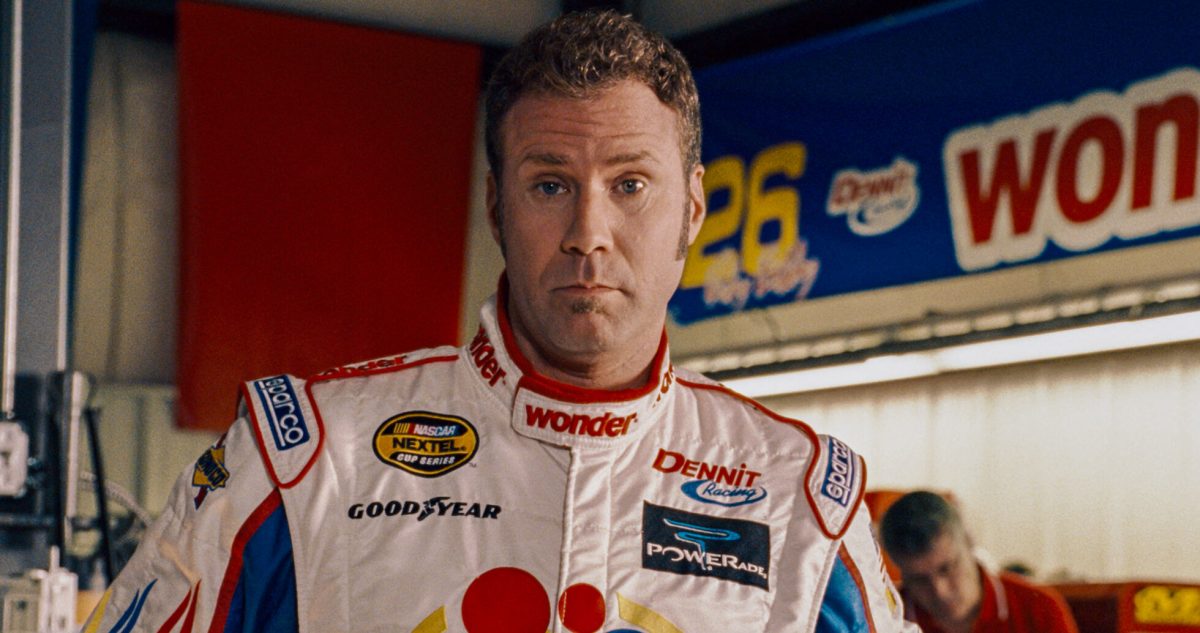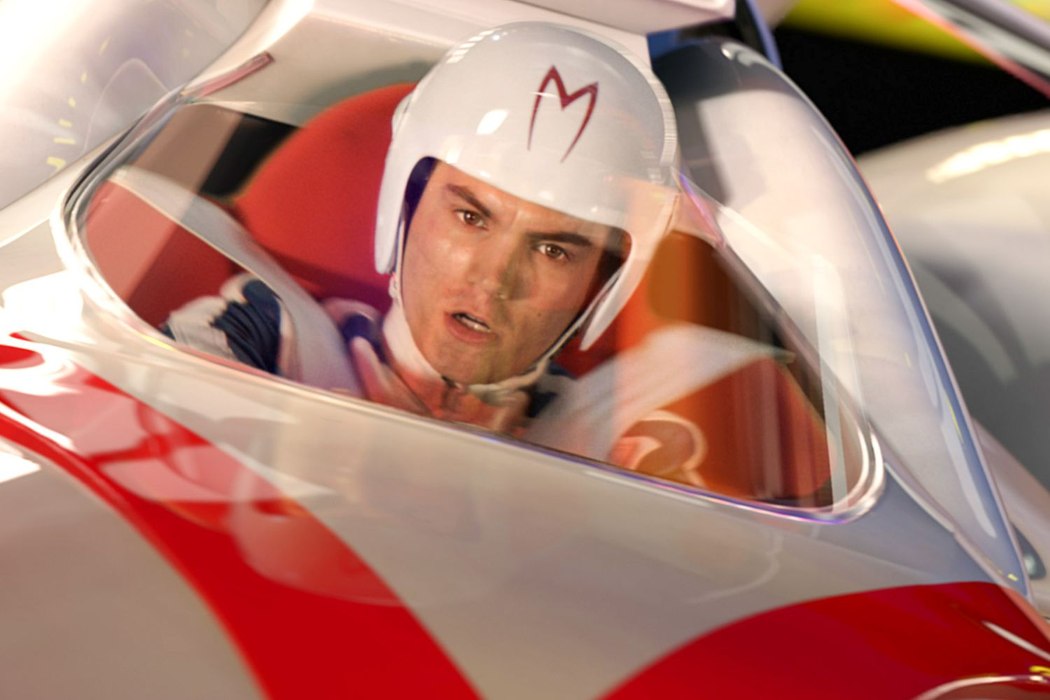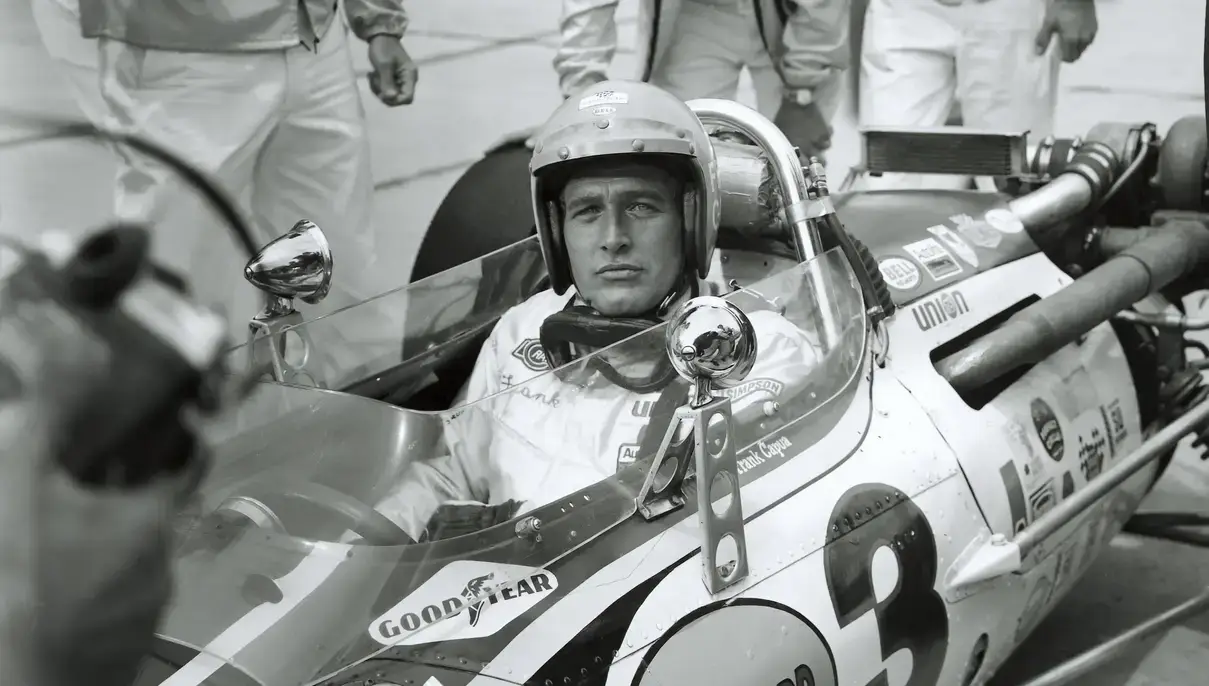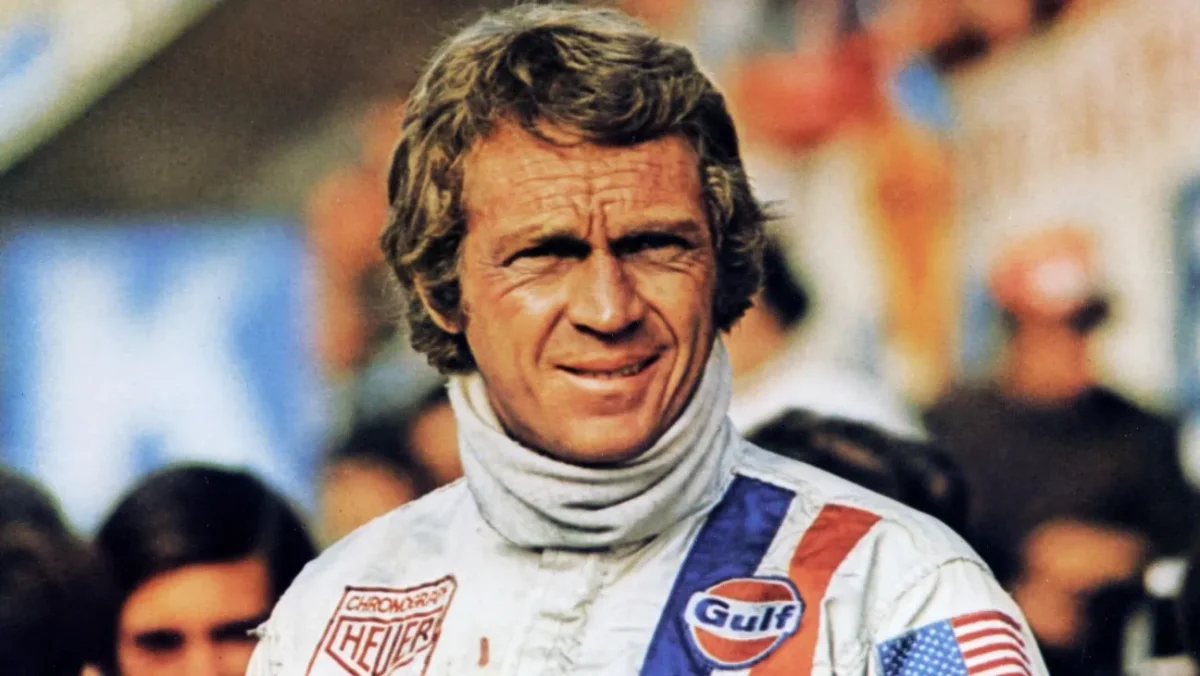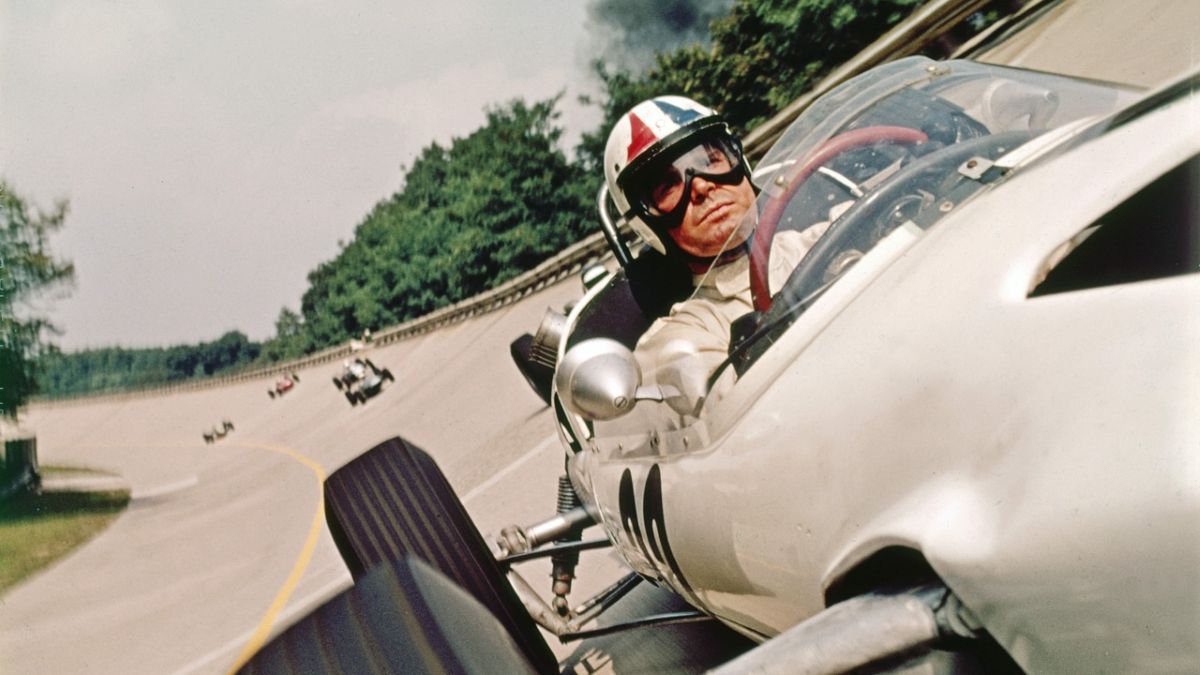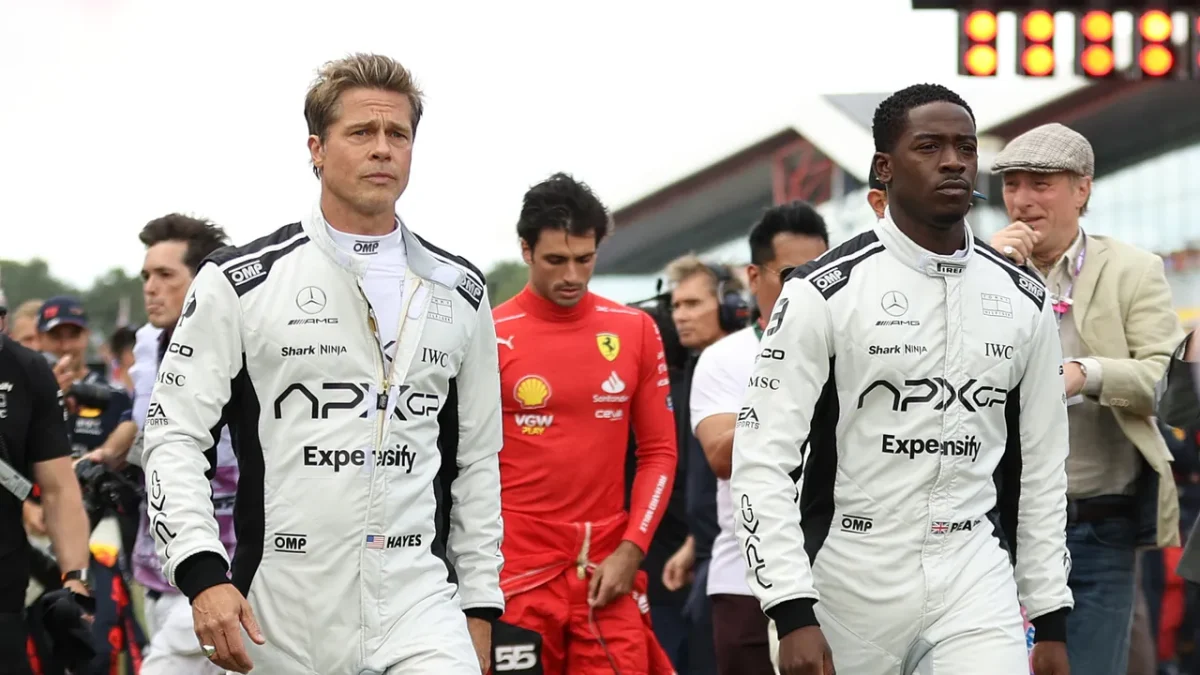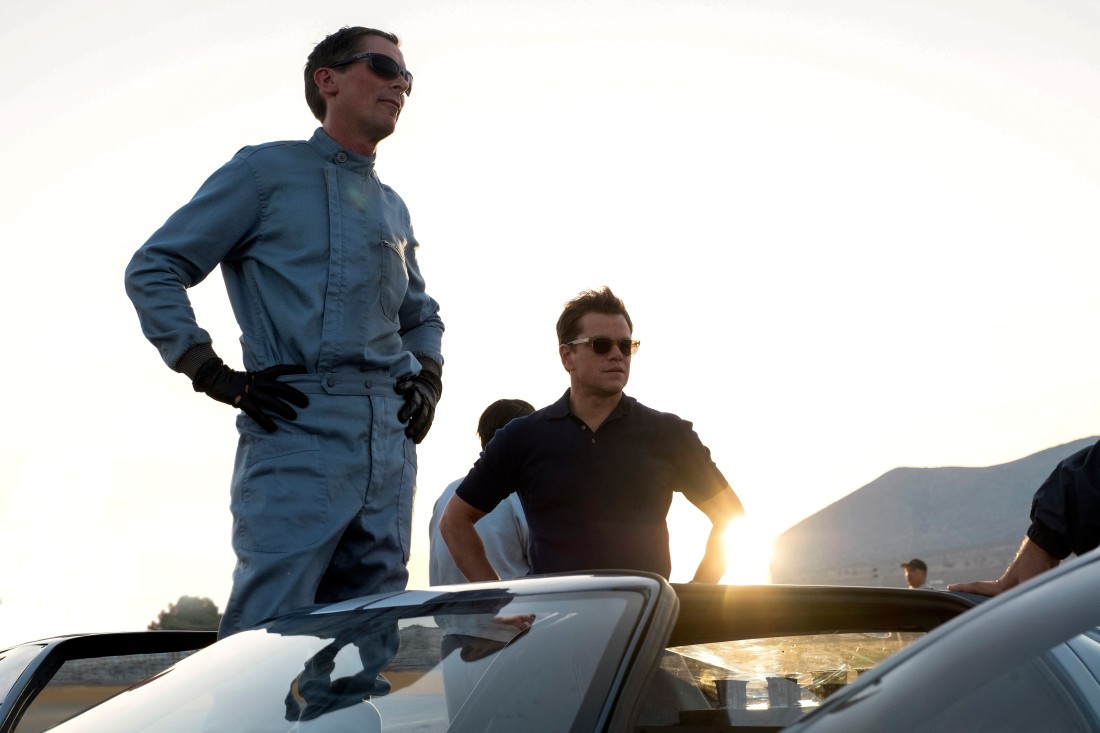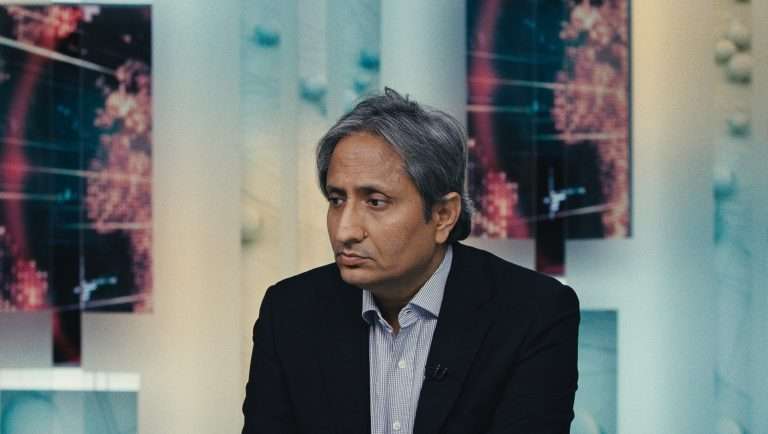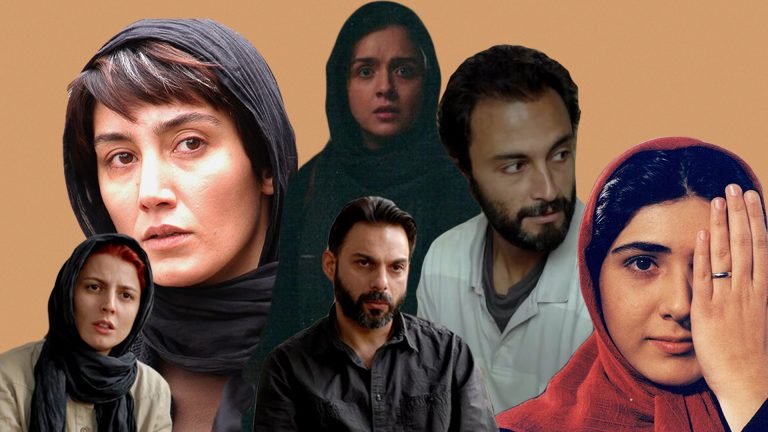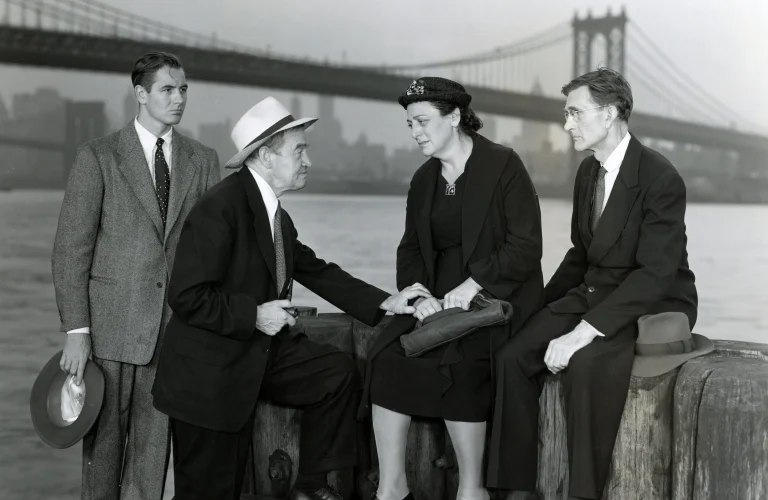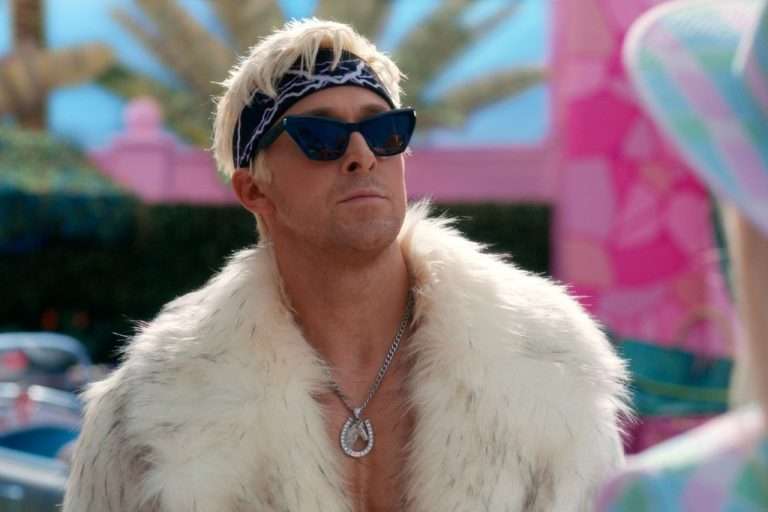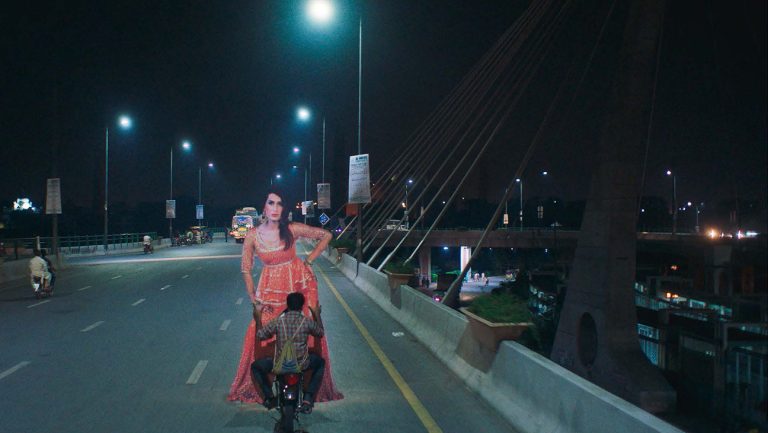Cinema wowed early audiences with the sheer novelty of watching motion on the big screen. When movement appeared faster than ordinary life, the quick and frantic action created high-energy entertainment for viewers. From silent slapstick comedies to modern-day action spectacles, cinema’s ability to capture, manipulate, and exaggerate motion remains central to its enduring power to thrill. With each advancement in sound and camera technology, our adrenaline and attention continue to shape our appetite for the overwhelming rush of speed. This is why racing movies so perfectly convey the exhilarating sensation of velocity on screen.
One of the earliest showcases of auto racing in movies was Chaplin’s Kid Auto Races at Venice (1914), the first short in which Chaplin appeared as the Little Tramp. Although chase sequences became a staple of many slapstick comedies by Chaplin, Keaton, and Lloyd, it was only with the advent of sound that racing in movies found a new way to convey speed—through the roar of engines and the screech of tires. Howard Hawks’s Pre-Code drama The Crowd Roars (1932) revolves around James Cagney’s motor-racing champion. While the camera technology and editing were limited for their time, the film still captured the tense, visceral thrill of driving on a racetrack.
It wasn’t until proper camera mounts and rigging became standard practice in the industry that racing cinematography was truly revolutionized, beginning with John Frankenheimer’s Grand Prix (1966). Grand Prix was not only a watershed moment for racing movies but also pivotal to the cinematic evolution of the “being inside the car” perspective.
The following list of car-racing movies focuses on racing-centered narratives. Films that incorporate fantasy (The Love Bug), otherworldly settings (Redline), or dystopian elements (Death Race 2000) are excluded. While John Lasseter’s Cars (2006) features a world of anthropomorphic vehicles, it’s largely a coming-of-age story that uses Lightning McQueen’s obsession with racing to frame its life lessons. Hence, it’s also not part of the list. Without further ado, let’s dive into these racing-focused character dramas and high-energy spectacles.
Honorable Mentions:
Greased Lightning (1977)
Michael Schultz, best known for “Coolie High,” directed this dramatized biopic of Wendell Scott, the trailblazing African American NASCAR driver whose historic 1963 victory was a highlight in a groundbreaking career that ultimately earned him a posthumous induction into the NASCAR Hall of Fame in 2015.
In “Greased Lightning,” stand-up comedian and accomplished actor Richard Pryor embodies Scott, portraying a figure whose resilience against systemic racism defined his career. While the film doesn’t deliver particularly memorable racing sequences, it effectively captures the institutional barriers of the racing world, and the emotional stakes behind Wendell’s journey imbue even the few on-track scenes with weight and gravitas.
Known primarily for his comedic brilliance, Pryor navigates a sometimes uneven tone, where humor occasionally contrasts sharply with the stark realities of southern racism. Yet, he handles the film’s poignant moments with grace, particularly in the latter half of the story. Adding another layer of depth, Pam Grier—iconic in the blaxploitation era—delivers a grounded, understated performance as Wendell’s supportive wife, Mary Jones, providing an emotional anchor amidst the narrative’s tension.
The Last American Hero (1973)
Lamont Johnson’s “The Last American Hero” follows the story of young rebel Elroy Jackson Jr. (played by Jeff Bridges), who leaves his father’s moonshining operation to try his hand at demolition derbies before moving into professional stock car racing. Like many racing films of the era—excluding “Grand Prix” and “Le Mans”—the movie doesn’t deliver particularly thrilling racing sequences. The climactic final race, in particular, feels anticlimactic, relying on uninspired montages and stock footage that sap the tension. Yet the film remains a compelling character study, capturing the fearless, go-for-broke mindset that propels Elroy into the dangerous racing world.
This was Jeff Bridges’ first full-fledged role as a protagonist, unlike the actor sharing the ensemble focus in “The Last Picture Show” (1971). Even here, he deftly carries the “that’s just like your opinion, man!” attitude of The Dude, while also conveying quiet yearning for connection and genuine warmth in his interactions with his younger brother, played by Gary Busey. Though its racing action is modest, the film stands out as a small gem among the more grounded, reality-based racing movies of the period.
10. Days of Thunder (1990)
Tony Scott’s “Days of Thunder” fits neatly into the classic Tom Cruise star-vehicle mold of the 1980s—a formula established by films like “Top Gun,” “The Color of Money,” and “Cocktail.” Once again, Cruise embodies a young, gifted maverick fueled by ambition and raw talent, guided by a grizzled mentor, and grounded—often literally—by a romantic interest.
Here, his Cole Trickle is a hotshot racer hungry to make his mark on the stock-car circuit. Robert Duvall lends weight and warmth as his world-weary mentor, while Nicole Kidman provides the requisite emotional counterbalance. Michael Rooker also stands out as Trickle’s rival, Rowdy Burns, bringing a sly competitiveness that adds texture to the film’s middle stretch.
The racing sequences, however, are less kinetic than Scott’s dazzling aerial choreography in “Top Gun.” Stock-car racing—often built on strategic “rubbing,” side-swiping, and psychological gamesmanship—proves trickier to translate into cinematic fireworks. The repetitive nature of the sport means the set pieces rely less on visceral visual invention and more on character beats and music to sustain momentum.
What’s changed in the depiction of racing is that pre-1980s films leaned on a gritty, almost documentarian realism, immersing viewers in the raw physicality of the track, whereas Scott replaces that grounded texture with a hyper-stylized, MTV-era slickness—heightened even further by Hans Zimmer’s thunderous, adrenaline-pumping score.
Also Read: All Tom Cruise Movies, Ranked
9. Talladega Nights: The Ballad of Ricky Bobby (2006)
“Talladega Nights: The Ballad of Ricky Bobby” is Adam McKay’s riotous deconstruction of the racing sports movie, folding parody and spectacle into a single unruly package. Known for his sharp satirical sensibilities in “The Big Short” and “Don’t Look Up,” McKay uses the NASCAR world as both playground and target.
Will Ferrell’s Ricky Bobby, who ascends from a pit crew member to a national racing icon, embodies the bluster and bravado of a culture that glorifies speed as much as it does ego and meanness. Surrounded by a trophy wife (Leslie Bibb) and a submissive best friend (John C. Reilly), Ricky personifies a distinctly American brand of hollow heroism. The arrival of Jean Girard (Sacha Baron Cohen), his ostentatious French rival, punctures that illusion, setting in motion a classic redemptive arc that McKay undercuts at every turn with gleeful absurdity.
What makes the film particularly effective is its ability to mirror the adrenaline of real racing without surrendering to its clichés. The NASCAR sequences are filmed with genuine kinetic flair, creating a sense of spectacle that stands in sharp contrast to the petty, often ridiculous dramas unfolding around them.
McKay isn’t interested in glorifying the sport; he’s far more invested in skewering its masculinist pageantry, its obsession with branding, and the culture of entitlement it fuels, like what he previously did with newsrooms in “Anchorman: The Legend of Ron Burgundy.” It’s chaotic, uneven, and very aware of its own ridiculousness, which is both its great strength and its limitation.
Recommended Reading: All Adam McKay Movies Ranked
8. Speed Racer (2008)
“Speed Racer” (2008) — directed by Lana Wachowski and Lilly Wachowski — is an audacious, hyper-stylized adaptation of the 1966 manga of the same name that helped define pop-racing aesthetics. It’s the kind of film that invites sharply divided reactions: some viewers find it “headache-inducing,” while others hail it as “endlessly innovative.” The racing here doesn’t lean into fantasy like “The Love Bug,” or the otherworldly abandon of “Redline.” Instead, it carves out a heightened, almost cartoon-physical reality of its own — a world where absurd gadgets, acrobatic car combat, and rollercoaster tracks blend into a sensory assault of spectacle.
Despite its psychedelic CGI sheen, the film remains tethered to real-world stakes: money, power, and the struggle of independence against corporate greed. At its heart is Speed Racer (played by Emile Hirsch), a prodigious driver determined to bring glory to his family’s small business, Racer Motors, run by his father, Pops (John Goodman), while resisting the predatory advances of the sinister corporation Royalton Industries.
The film’s tone is strikingly uncynical. Its kids-friendly subplots and broad humor may grate on some viewers, but they fit the world’s deliberately heightened emotional register. The racing sequences themselves are a kinetic marvel — frequently compared to martial arts choreography (“Car-Fu”) — where duels between racers unfold like stylized combat ballets. Overall, it’s a candy-coated, physical-defying visual art – nothing more, nothing less.
7. Winning (1969)
Paul Newman’s turn as IndyCar driver Frank Capua in James Goldstone’s Winning (1969) may not be among his most celebrated performances, yet it stands as a pivotal work in his career — the film that ignited his lifelong passion for racing and transformed him into a genuine competitor on the track for the next three decades.
The 2015 documentary that chronicled Newman’s racing career is also titled “Winning.” In the film, Frank Capua is a man consumed by his pursuit of the Indianapolis 500. His single-minded ambition collides with the complexities of his personal life when he falls for Elora (Joanne Woodward), a single mother whose warmth grounds him — at least temporarily. Their marriage, and his attempt to be a father to her teenage son Charley, form the emotional core of the story.
But Frank’s relentless devotion to the track eventually fractures their fragile family dynamic, as Elora’s loneliness and Frank’s obsession spiral into inevitable heartbreak. Newman plays Capua with an introspective restraint that makes his ambition both admirable and isolating. The film isn’t built on roaring engines or spectacular crashes. It doesn’t reach the kinetic intensity of later racing films like “Rush” or “F1”, but it has a quiet, meditative energy that reflects its era.
Goldstone keeps the racing sequences lean but immersive, blending archival footage with new material to create an authentic pulse of speed and danger. What “Winning” truly captures, though, is the psychology of competition — the solitude behind the spectacle, and the personal cost of defining oneself entirely through victory.
6. Grand Turismo (2023)
Neill Blomkamp of “District 9” fame takes the true story of Jann Mardenborough – the GT Academy-winning race driver – and crafts it into a familiar yet undeniably rousing underdog tale. Anchored by Archie Madewke’s solid emotional performance as Jann, “Gran Turismo” charts his extraordinary journey from virtual tracks to real-world circuits. Supporting him are mechanic Jack (David Harbour), a seasoned former racer, and Danny (Orlando Bloom), an eager motorsport marketing executive, both of whom help shape Jann’s path to the podium.
While the film indulges in some stretched dramatizations and occasionally cringeworthy dialogue, it largely succeeds thanks to its dynamic, immersive race sequences, punctuated by slick digital effects. The story doesn’t linger on the technical intricacies of racing, nor does it fully explore Jann’s internal struggles, especially the strained relationship with his father (despite Djimon Hounsou’s heartfelt performance).
Yet these shortcomings don’t derail the experience: Blomkamp’s confident direction and the cast’s engaging performances keep viewers invested, particularly during the pulse-pounding racing sequences. Unlike films such as “Days of Thunder,” which often dramatize racing through melodrama or romanticized competition, Blomkamp’s racing sequences create an intimate perspective, putting audiences directly into Jann’s experience.
5. Le Mans (1971)
Steve McQueen made driving look really cool in movies. That aura of effortless mastery in the driver’s seat can be witnessed in the motorcycle chase in “The Great Escape” (1963) and the car chase in “Bullitt” (1968). But as a race enthusiast and competitor, McQueen wanted to make a definitive racing movie, although he turned down a role in Frankenheimer’s “Grand Prix” (1966), which is hailed for its groundbreaking cinematography for the racing scenes.
The King of Cool eventually made that racing movie titled “Le Mans” (the legendary John Sturges was initially attached to direct, but was later replaced by the lesser-known Lee H. Katzin). McQueen plays Michael Delaney, a Porsche driver competing in the 24-hour endurance race at Le Mans. Michael is haunted by the previous year’s fatal accident involving a Ferrari driver. The press covering the race in the current year reports Michael’s rivalry with Ferrari driver Eric Stahler. Michael is also drawn to the widow of the deceased Ferrari driver, Lisa. “Le Mans” seems to have all these ingredients for a typical racing sports drama.
But “Le Mans” is the antithesis of the conventional racing movie, deliberately using dramatic conventions without offering any familiar catharsis. Shot during the actual 1970 Le Mans race, the film carries an almost obsessive devotion to the authenticity of speed. The camera captures everything with precision. Every roar of the engine, every slick maneuver on the wet tarmac is captured with a patience that borders on reverence.
What makes “Le Mans” fascinating isn’t just the racing; it’s what happens in the spaces between the races. Instead of drumming up the usual arc of triumph or redemption, the film pares the narrative down to its bare bones. It’s quiet, almost alienating at times, as it peers into the quiet storm of Michael Delaney’s inner world, i.e., his existential crisis.
As Steve McQueen’s Delaney famously mutters, “When you’re racing, it’s life. Anything before or after is just waiting.” “It’s the rare film that evokes what racing might feel like inside a driver’s head: lonely, quiet, and fast. What struck me most is how unpolished it feels compared to today’s hyper-edited racing narratives — even the adrenaline-junkie stylization of the documentary series “Formula 1: Drive to Survive.” “Le Mans” is patient, maybe too patient for some. But in that patience, there’s a rare honesty about obsession, endurance, and the void that follows glory.
4. Grand Prix (1966)
“Grand Prix” was John Frankenheimer’s passion project—a film that would ultimately provide the blueprint for modern racing cinema. Coming off the back of the logistically monumental “The Train,” Frankenheimer doubled down on technical ambition, delivering a work that dazzled audiences with its unprecedented realism and scale.
The film’s kinetic energy is anchored in its groundbreaking cinematography: cameras mounted on real Formula One cars, specially designed tracking vehicles capturing thrilling close-ups, and sweeping helicopter shots that lend the races a breathtaking immediacy. These innovations set the gold standard for filming race sequences, influencing generations of racing films to come. The cast—featuring an impressive multinational ensemble including Yves Montand, James Garner, and Toshiro Mifune—further elevated the film’s prestige.
The narrative follows four drivers battling for the 1966 Formula One Championship. While the emotional stakes on the track feel electric, the film occasionally slows down in its melodramatic interludes. Yet, it’s the performances—particularly Montand’s layered portrayal of the world-weary Ferrari driver, Sarti—that give these quieter stretches a striking depth. The film may lack the sharp character writing found in later racing dramas like “Rush” and “Ford v Ferrari,” but its racing sequences remain as visceral and thrilling as ever. Presented in 70mm Cinerama, the Monaco and Monza races must have been nothing short of spectacular on the big screen.
Like many racing films that followed, “Grand Prix” mythologizes the race driver, casting him as both a glamorous and tragic figure. But its devastating climax cuts through the spectacle with a gut-wrenching reminder of the sport’s human cost. The haunting final image—an empty track and Aron alone in silence—offers a quiet, sobering counterpoint to the film’s roaring engines and high-octane bravado, cementing “Grand Prix” as both a spectacle and a critique of racing’s perilous allure.
3. F1: The Movie (2025)
Brad Pitt embodies that rare, enduring “cool” — not merely through his striking looks, but through an easy self-assurance, quiet magnetism, and a grounded emotional weight that few actors can replicate. His brand of cool often belongs to outsiders and loners — men driven by instinct rather than belonging — traits that perfectly align with the psychology of a race car driver. Given that cinematic icons like Steve McQueen and Paul Newman once redefined what it meant to be “cool behind the wheel,” it feels fitting that Pitt finally takes his turn in the driver’s seat of a Formula One drama.
Directed by Joseph Kosinski, whose mastery of kinetic spectacle was evident in “Top Gun: Maverick,” “F1: The Movie” channels that same adrenaline into a different kind of cockpit. Here, Pitt plays Sonny Hayes — a stoic, veteran racer-for-hire who retreated from the limelight after a devastating crash at the Spanish Grand Prix in the 1990s.
Years later, he’s pulled back into the fray by his former teammate-turned-team owner, Ruben (Javier Bardem), and tasked with mentoring an impulsive young driver, Joshua (Damson Idris). The story plays comfortably within familiar lanes: the veteran and the rookie, the ghosts of past failures, and the dream of redemption that keeps the engine running.
While “F1” doesn’t reinvent the genre narratively, it excels in how it feels. Kosinski’s direction, aided by Lewis Hamilton’s input as producer and consultant, achieves an unprecedented level of realism — real race cars were engineered to carry cameras and capture the velocity and texture of Formula One racing from within. The resulting sequences are breathtaking, visceral, and immersive in a way digital trickery rarely achieves. Hans Zimmer’s throbbing, symphonic score injects an almost spiritual intensity into the roar of engines and the split-second decisions that define life and death on the track.
The film’s main shortcoming lies in its emotional and thematic shallowness. We get glimpses of inner struggle in Pitt’s Sonny Hayes, but they’re brushed aside in favor of pacing and spectacle. Yet despite this lack of depth, “F1” works superbly as pure cinema: a visual and auditory rush, an ode to motion and machinery, and a showcase for Pitt’s undiminished star power.
Also Read: All 6 Joseph Kosinski Movies (Including F1: The Movie), Ranked
2. Rush (2013)
Ron Howard, celebrated for his emotionally resonant character dramas like “Apollo 13” and “A Beautiful Mind,” brings that same narrative weight to the racing circuit with a riveting portrayal of the 1976 Formula One season. Written by Peter Morgan (who would go on to create “The Crown”), “Rush” masterfully stages the legendary rivalry between James Hunt and Niki Lauda.
Chris Hemsworth embodies Hunt as a charismatic daredevil—brilliant, instinctive, and self-destructive—while Daniel Brühl gives a quietly magnetic performance as Lauda, the hyper-focused perfectionist whose every move is calculated. Rather than reducing their rivalry to mere competition between McLaren and Ferrari, Howard and Morgan frame it as a clash of life philosophies: reckless passion versus methodical precision.
This character-driven approach lands so effectively because both central performances are deeply textured, with Brühl in particular delivering a performance that anchors the film with emotional nuance. Yet, the movie doesn’t neglect its racing core. Howard crafts thrilling, tactile track sequences that blend practical effects, sharp editing, and immersive sound design to place the viewer right in the cockpit.
While the real-life rivalry was dramatized for cinematic impact, the film rekindled mainstream enthusiasm for racing dramas, a genre that had been largely dormant since “Days of Thunder.” The result is not just a sports biopic but an exhilarating, high-stakes exploration of ambition, ego, and what drives people to risk everything at full speed.
1. Ford V. Ferrari (2019)
James Mangold’s “Ford v. Ferrari” (2019) stands as one of the most definitive and emotionally grounded racing films ever made. Its race sequences may not possess the immersive, high-tech realism of “F1: The Movie.” But Mangold’s movie can satisfy even the non-racing enthusiasts because of the emotional stakes involved in this narrative.
Anchored by two exceptional performances from Matt Damon and Christian Bale, the film follows automotive designer Carroll Shelby (Damon) and fearless driver Ken Miles (Bale) as they’re recruited by Henry Ford II (Tracy Letts) and executive Lee Iacocca (Jon Bernthal) to build a car capable of dethroning Ferrari at Le Mans.
The mission stems from a bruised corporate ego — Ford’s failed attempt to acquire Ferrari leaves the company humiliated, and Ford demands revenge in the form of victory. In the middle of this battle for prestige stand Shelby and Miles: one a smooth-talking visionary adept at navigating bureaucracy, the other a volatile purist allergic to compromise. Their friendship, trust, and shared defiance form the emotional spine of the story.
The film embraces the familiar “rise of the underdog” arc, yet transcends it by examining the human cost of ambition. Mangold uses the corporate-versus-creative conflict to explore how genuine passion and craftsmanship are often smothered by boardroom decisions and brand politics. Every gear turn, every victory lap is tinged with the awareness that the people who risk everything on the track are the ones with the least power off it.
The racing scenes themselves are extraordinary — visceral, precise, and thrilling – yet, as I mentioned before, it is the emotions behind the two characters’ individual journeys that make it more memorable. Eventually, what stays with me is Christian Bale’s character’s expression when he learns the result of the Le Mans race in the end. It was a heartbreaking moment, making us bitterly realize how corporate overreach is also a part of motorsports.

